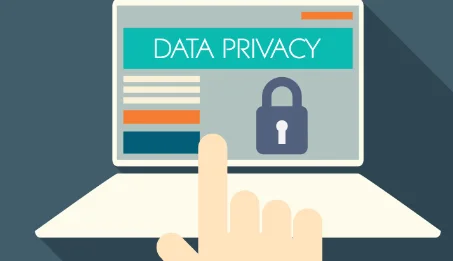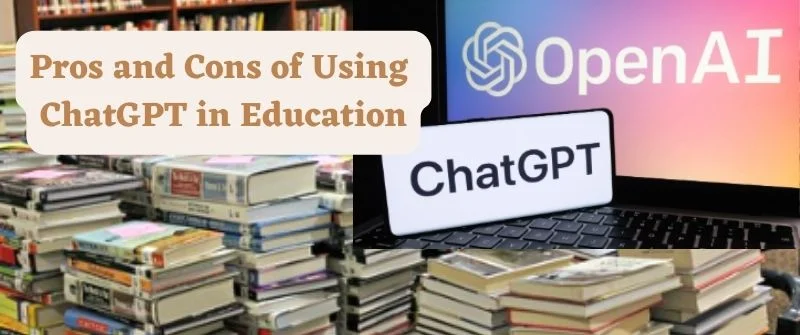Using ChatGPT in education has various advantages. It promotes student participation and critical thinking.
However, there are worries about potential misinformation, a lack of human interaction, and ethical issues.
It is critical to balance technology and conventional teaching approaches to maximize its benefits while addressing its limitations.
We aim to uncover some pros and cons of using this software in our learning institutions.
Pros and Cons of Using ChatGPT in Education

Advantages of AI Assistance
1. Personalized Learning
The capacity of ChatGPT to analyze individual learning patterns and preferences enables it to provide customized learning experiences.
It may modify content, examples, and explanations to meet the specific needs of pupils by recognizing their strengths and weaknesses.
This adaptability promotes a more engaging and effective learning experience, increasing student motivation and comprehension.
Furthermore, ongoing contact with ChatGPT identifies areas for development and provides focused solutions, ultimately boosting self-directed learning and empowering students to take control of their educational journey.
2. Instant Feedback
ChatGPT’s real-time responses give students immediate feedback, a vital element in the learning process.
Whether answering questions, verifying assignments, or providing explanations, fast feedback promotes active learning and assists students in identifying and correcting errors as soon as possible.
Because students may reinforce their understanding while the topic is still fresh in their thoughts, this timely guidance improves comprehension and retention.
Furthermore, receiving immediate feedback fosters a sense of progress and accomplishment, improving students’ confidence and drive to interact with the learning content further.
3. Access to Vast Knowledge
ChatGPT’s access to a huge knowledge base provides students with information that goes beyond traditional resources.
Remember, it stimulates research and critical thinking by drawing on diverse issues and perspectives. Students can explore various topics, obtain deeper insights, and gain a more comprehensive world view.
Also, this vast knowledge library enhances the learning experience and develops curiosity, creativity, and a lifetime love of learning.
4. 24/7 Availability

ChatGPT’s 24-hour availability ensures that students worldwide have continuous access to educational support and materials.
Learners can use ChatGPT whenever it is convenient, whether they are in different time zones or have a time limitation.
This adaptability enables a variety of study patterns, making it a great learning companion for busy people.
Furthermore, constant availability implies immediate assistance, allowing students to seek guidance anytime they face obstacles or have questions, encouraging a continuous learning process that exceeds typical classroom constraints.
Continuous accessibility encourages self-paced learning and empowers students to take charge of their educational experience.
Disadvantages and Risks
1. Misinformation
Due to its dependency on internet data, using ChatGPT in teaching can expose pupils to disinformation. Without a comprehensive fact-checking mechanism, erroneous or biased information may be disseminated.
Students may mistakenly consider fraudulent content as legitimate, jeopardizing their learning outcomes.
Educators need to teach critical thinking skills to pupils to assist them in distinguishing credible sources and analyzing the credibility of information obtained through ChatGPT.
2. Lack of Human Interaction
The lack of human interaction in ChatGPT education can impede students’ social and communication development.
Personal development and future career success require interpersonal skills such as effective communication, teamwork, and empathy.
Depending primarily on AI interactions may limit students’ opportunities to participate in meaningful discussions, share ideas, and work with classmates.
Incorporating ChatGPT with human-led interactions can help to strike a balance and provide a well-rounded learning experience.
3. Ethical Concerns

Using ChatGPT in education raises ethical problems about data privacy, ownership, and the proper use of AI.
Students’ data may be captured and retained when interacting with the system, necessitating stringent protections to protect their privacy.
Furthermore, transparency in how AI systems make judgments is critical to avoid biased or discriminating results.
As a way of retaining trust and integrity in the educational environment, educators must carefully assess the ethical implications of AI integration, uphold data protection standards, and provide clear guidance on responsible AI usage.
4. Overreliance on Technology
An overreliance on ChatGPT and technology in education may reduce the emphasis on traditional learning methods.
Students may become unduly reliant on AI-generated content, skipping out on crucial experiences such as hands-on learning, face-to-face conversations, and practical problem-solving.
It is necessary to balance technological tools and traditional teaching methodologies to provide a well-rounded education that develops critical thinking, creativity, and flexibility.
Personal Reflection on Using AI Academic Growth
Integrating artificial intelligence into my academic career has been a revolutionary experience. AI-powered solutions like ChatGPT have aided my study by giving individualized assistance, immediate feedback, and access to information.
The option to request assistance 24 hours a day, seven days a week, has increased my confidence and motivation, allowing for self-directed learning.
However, I’ve also identified potential stumbling blocks, such as misinformation and over-reliance on technology.
To combat this, I’ve become more cautious of knowledge sources and seek a happy medium between AI aid and traditional learning approaches.
AI has benefited my academic development, allowing me to navigate a dynamic and ever-expanding educational world.
Challenges of using AI in Education
Teacher Training and Adoption
Integrating AI into education requires comprehensive teacher training to leverage AI tools in the classroom effectively.
Many educators may face challenges adapting to new technologies, limiting their ability to utilize AI’s potential fully. Encouraging and supporting teachers in embracing AI and complementing their teaching methods is crucial for successful implementation.
Data Privacy and Security

AI applications in education involve collecting and analyzing student data, raising concerns about privacy and security.
Safeguarding sensitive information from breaches and unauthorized access is essential to maintain trust between educational institutions, students, and their families.
Striking a balance between utilizing data to enhance learning experiences and protecting individuals’ privacy is a complex challenge.
Ethical AI Use and Bias
AI algorithms may inadvertently perpetuate bias in educational settings, affecting student outcomes and opportunities.
Lack of diversity in training data or biased model design can lead to unequal treatment or discrimination.
Ensuring fairness, transparency, and inclusivity in AI implementation demands rigorous monitoring and continuous refinement of AI systems to minimize bias and promote equitable student learning experiences.

Joseph is a freelance journalist and a part-time writer with a particular interest in the gig economy. He writes about schooling, college life, and changing trends in education. When not writing, Joseph is hiking or playing chess.
